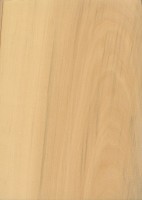 |
Common Name(s): Castelo Boxwood, Ivorywood, Palo Blanco Scientific Name: Calycophyllum multiflorum Distribution: South America Tree Size: 20-30 ft (6-9 m) tall, 1-2 ft (.3-.6 m) trunk diameter Average Dried Weight: 51 lbs/ft3 (815 kg/m3) Specific Gravity (Basic, 12% MC): .64, .82 Janka Hardness: 1,810 lbf (8,050 N) Modulus of Rupture: 13,460 lbf/in2 (92.8 MPa) Elastic Modulus: No data available Crushing Strength: 7,840 lbf/in2 (54.1 MPa) Shrinkage: Radial: 4.0%, Tangential: 7.4%, Volumetric: 11.0%, T/R Ratio: 1.9 |
Color/Appearance: Heartwood is a light brown to pale yellowish color. Sapwood is lighter in color and isn’t clearly demarcated form the hartwood.
Grain/Texture: Grain tends to be straight to slightly interlocked. Fine, uniform texture with a slightly lustrous appearance.
Endgrain: Diffuse-porous; solitary and radial multiples of 2-4 or more; small pores sometimes arranged diagonally, numerous to very numerous; parenchyma absent; narrow rays not visible without lens, spacing fairly close.
Rot Resistance: Mixed reports depending on type of decay fungi; usually rated as moderately durable. Excellent resistance to marine borers.
Workability: Overall working properties are fair, though dry wood is reported to have a high cutting resistance. Castelo Boxwood turns, glues, and finishes well.
Odor: No characteristic odor.
Allergies/Toxicity: Besides the standard health risks associated with any type of wood dust, no further health reactions have been associated with Castelo Boxwood. See the articles Wood Allergies and Toxicity and Wood Dust Safety for more information.
Pricing/Availability: Not commonly available in the United States, the closely related Lemonwood (also known as Degame) is seen more often. Typically sold as turning blanks. Prices are likely to be moderately high for an imported lumber.
Sustainability: This wood species is not listed in the CITES Appendices or on the IUCN Red List of Threatened Species.
Common Uses: Archery bows, carvings, inlay and turned objects.
Comments: Marketed as an alternative to true european Boxwood (Buxus sempervirens), Castelo Boxwood is said to turn very well, and its color and texture is comparable to true boxwood as well.
None available.
Scans/Pictures: A special thanks to Steve Earis for providing the wood sample (facegrain) of this wood species.


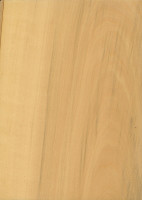
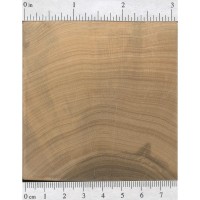
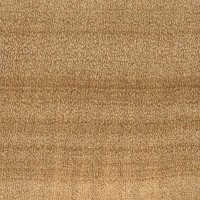
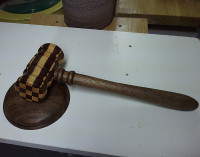



a turned bowl from castelo boxwood
I have done many carvings with this wood . It holds detail and is easy
to work with. My carvings are most of the time small . The wood will
take an easy polishing and a great wax finish.
I have done many carvings with this wood . It holds detail and is easy to work with. My carvings are most of the time small . The wood will take an easy polishing and a great wax finish.